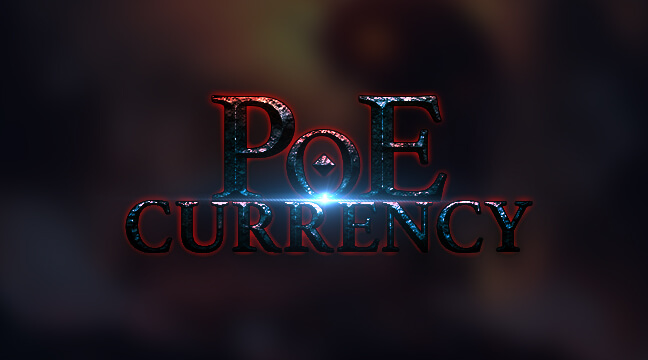In this mechanics explained guide, we'll be covering the full calculation for damage taken. With every step that takes place from the moment, you intercept a damaging hit or move onto a damaging ground effect to the actual damage that you take.
Receiving Damage
When you receive damage in Path of Exile, the damage first needs to interact with a number of mechanics in a very specific order before the damage is actually dealt to you.
This order of operations will decide outcomes, such as how much damage will be dealt or if the damage will even be dealt at all.
The order of operations is quite important because it can show you the value of particular mechanics when it comes to damage mitigation, especially in combination with other mechanics.
To keep things simple, we'll number each step and detail the full process in its entirety at the end.
Step 1 - Initial Damage
This is the damage in its purest form. Think of the base damage you read on a skilled gem. Any local damage modifiers and flat added damage apply here before the total base damage is known.
At this stage, damage conversion mechanics or modifiers that add damage is extra are applied to the base damage. Be aware that damage conversion is not the same as damage taken as, which is a different mechanic that we'll talk about a bit later.
Global modifiers, such as increased, reduced, more and less than affect the damage number. This only includes the modifiers that actually affect the damage being dealt rather than the damage being taken.
For example, this would include a modifier that reduces the amount of damage a target deals, but it wouldn't include a modifier that reduces the amount of damage you take as that comes later in the calculation.
Once that actual damage number is known, the Critical Strike roll can then take place if applicable to see if the hit will be a Critical Strike or not.
Step 2 - Preventing A Hit
If the damage originates from a hit, it can be prevented with a few mechanics. If the hit was an attack, it can be prevented with evasion and if the hit was a spell, it can be dodged with spell dodge.
Both damage avoidance and block interact with the calculation a bit later on. This is because successful evasion or dodge actually prevent a hit from taking place whilst damage avoidance and block just prevent the damage of the hit while the hit still takes place.
Step 3 - Damage Taken As
At this stage, the damage can be shifted into a different type, with modifiers that provide a percentage of a particular type of damage to be taken as another type of damage. When this happens, the damage tag doesn't retain its original properties after it has been shifted to a new type of damage.
For example, if you take some lightning damage while you have the Incandescent Heart body armor (which you can get by using POE Currency) equipped, the portion of lightning damage that is taken as chaos damage can no longer shock by default. This also applies to penetration in the same way.
It’s important to note here that the damage is only mitigated through the calculation once, so it can’t be mitigated twice by the same mechanic through the use of damage taken as.
For example, if you take a hit of physical damage while you’re using the Lightning Coil (a POE Item), the physical damage won’t be reduced by armor before interacting with damage taken as and then again after. Instead, the armor will only apply to the physical portion of the damage after the damage shift has taken place. It’s very important to mention here that damage ticking can only be shifted to another damage type once.
Step 4 - Damage Mitigation
Once this step is reached, it’s known what types of damage and exactly how much damage are being dealt, so damage mitigation can begin.
Physical Damage is mitigated by physical damage reduction and Elemental and Chaos Damage is mitigated by their respective resistances.
Damage Avoidance, such as that on the Mistwall shield, is also considered as damage mitigation and takes place at this stage of the calculation. In this case, all the damage of a hit is mitigated, but the hit still takes place.
Step 5 - Damage Taken Modifiers
After damage mitigation has taken place, any modifiers to damage taken are then applied in a specific order.
Firstly, any modifiers that apply a flat amount to damage taken are applied, such as this modifier on Bramblejack.
Next, any modifiers that increase or reduce damage taken, such as Shocked or the Slayer’s Brutal Fervor node, are added together before being applied.
Lastly, modifiers that provide more or less damage taken, such as Fortification or Arctic Armour, are multiplied together and applied as the last part of this step.
Step 6 - Spell Suppression
If the damage comes from a spell hit, spell suppression is then applied at this stage of the calculation.
For the purpose of damage calculation, spell suppression essentially functions as if it were a less damage taken modifier with the exception that it also affects any damaging ailments that a spell hit may inflict, such as Ignite.
Step 7 - Stun Chance
After the final damage is calculated and if the damage originated from a hit, the chance to stun is then rolled based on the damage being dealt. Melee damage has an increased chance to stun and non-physical damage has a reduced chance to stun.
Related: POE 3.21: What Are Skill Gems And Links? - Beginner’s Guide
Step 8 - Block Chance
If the damage is from an attack hit, block chance is then rolled and if it’s from a spell hit, spell block chance is rolled. On a successful block, the attackers on heat effects are negated, and the damage is fully prevented.
However, the hit will still take place, dealing no damage but allowing any when hit modifiers that the defender may have to proc. If a stunning hit is blocked, the stun animation will instead be replaced by a blocking animation.
Step 9 - Actual Damage Received
At this stage, the actual damage is taken and the interaction of any modifiers that change how and where damage is taken are applied.
Here are some examples: The Totem Mastery that makes your totems take five percent of damage from hits before you; Frost Shield, which similarly takes a percentage of damage before you do; Aegis and guard skills, Ward, if it’s not currently broken; Energy Shield, if the damage does not bypass it; Mind Over Matter, if the damage would affect life.
Lastly, the damage is dealt to life if those resources are depleted or can’t be interacted with.
Damage Over Time
For damage over time, such as from a ground effect, the order of operations for the damage taken calculation is the same, although some steps, such as stun and block chances are skipped because they cannot apply.
Unless a modifier specifies that it only applies to hits, such as Fortification will generally interact with damage over time.
Lucky & Unlucky Damage
When the damage from a hit is lucky or unlucky, the full damage calculation process is simulated twice with the higher value being chosen for a lucky damage hit and the lower value being chosen for an unlucky damage hit.
Conclusion & Full Order
To conclude, here’s the full order of operations:
Initial damage is calculated > hip prevention like evasion and dodge > damage taken is to shift damage into another type > mitigations such as armor or resistances > modifiers to damage taken beginning with flat amounts then increases and decreases and then more and less > spell suppression if it can apply > stun chance > block chance > actual damage is received and anything that changes how and where you take the damage is applied.














